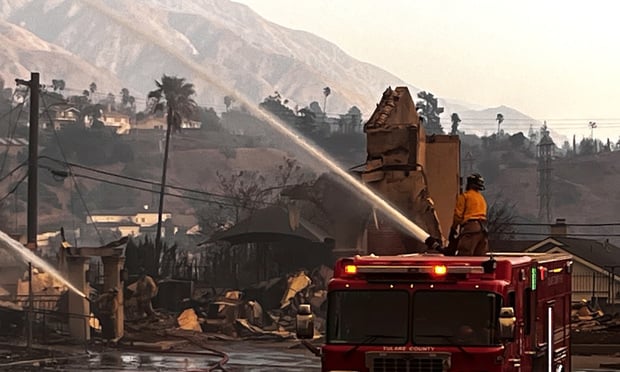A clear consensus exists among insurance executives and experts when it comes to the Property insurance market: Rates were on the rise before Superstorm Sandy, and there's certainly no reason the storm will stop that momentum.
“Rates had been on an upward trend,” says Robert Hartwig, president of the Insurance Information Institute. “Sandy will add to that pressure.”
Before Sandy struck the Northeast just prior to Halloween, rates in Homeowners' and Auto insurance were already increasing, due in part to the increasing cost of repairing homes and autos—and, in the case of Auto claims, the cost of repairing people.
Rates have increased each month in 2012, and Hartwig says this trend in rising Auto rates will continue. Price gains are now exceeding loss costs.
Property insurers were faced with the rising costs of construction materials during a disaster-filled 2011 when wildfires, tornadoes, hail and Hurricane Irene battered insurers.
While 2012 had been a relatively low catastrophe year for most carriers, Hurricane Sandy radically changed that. According to estimates, the industry could see more than 650,000 Homeowners' claims, 250,000 Auto claims and 100,000 Commercial claims.
“The industry will look at the trends and costs and then seek to price accordingly,” says Hartwig. “In the recent past, insurers have been successful in getting regulatory approval for higher rates.”
MarketScout's newest Personal Lines Rate Barometer—based on pricing surveys—indicates October matched September with a 3-percent rise in personal-lines rates.
MarketScout CEO Richard Kerr says price increases will “absolutely” continue, and it “will be very interesting” to see how the admitted market handles the aftermath of the storm.
“New admitted-market players kept creeping into coastal areas,” he says. “Some just got hammered.”
Kerr says of one carrier he refused to name: “I know the claims are more than the surplus.”
A SURPLUS OF OPPORTUNITY?
While admitted carriers reassess exposures, Kerr predicts Sandy will have a “profound” effect on the nonadmitted market as standard carriers start to shed risks.
Even pre-Sandy, carriers in the standard market were tightening underwriting guidelines and starting to retreat from high-risk areas, such as coastal property and homes far removed from the nearest fire department, according to Bill Gatewood, director of personal-lines products and sales at Burns & Wilcox.
“Carriers have been nibbling around the edges,” he notes, meaning that the standard market has been dropping higher Property risks and has become less accepting of accounts with a loss.
“We're starting to see Property risks come to us that a year ago would have easily gone to the standard market,” Gatewood says. “Sandy is going to push the [standard] market some more because their results are starting to deteriorate.”
Another factor, according to Gatewood, is a philosophy among many insurers to get out of the mono-line Property business. They would rather limit doing business to clients with multiple accounts—such as Home combined with the more profitable Auto.
“Agents have contacted us because of restrictions on mono-line,” he adds.
'NOT A LOT OF TAKERS'
Even in the surplus market, not all risks are accepted. Gatewood says he recently attempted to put together a Property program on the New Jersey coast and went to London for additional capacity.
He was turned away.
“There's very little interest in the Northeast from London or the reinsurers,” he adds. “There are plenty of opportunities, but not a lot of takers.”
Even before Sandy, the Northeast was becoming less acceptable to surplus carriers and reinsurers due to changes in the perception of risks in this region—brought about by Risk Management Solution's Version 11, released last year.
Months ago, when NU first reported on the effect RMS and increased cat losses were having on the market, Joel Cavaness, president of Risk Placement Services, said the model was inciting standard carriers to take evasive action on coastal exposure in New York and New Jersey, among other states.
Today, Gatewood says Sandy will only exacerbate the desire to limit exposures in the Northeast—at least at current rates.
One upshot of this is that Sandy could reinforce RMS' model and drive rates up to a level acceptable to London and the reinsurers, thereby adding capacity.
Or Sandy could convince London and the reinsurers that they were right in staying away from the Northeast, Gatewood says, meaning insurance could be harder to come by for an increasing share of the population.

Want to continue reading?
Become a Free PropertyCasualty360 Digital Reader
Your access to unlimited PropertyCasualty360 content isn’t changing.
Once you are an ALM digital member, you’ll receive:
- Breaking insurance news and analysis, on-site and via our newsletters and custom alerts
- Weekly Insurance Speak podcast featuring exclusive interviews with industry leaders
- Educational webcasts, white papers, and ebooks from industry thought leaders
- Critical converage of the employee benefits and financial advisory markets on our other ALM sites, BenefitsPRO and ThinkAdvisor
Already have an account? Sign In Now
© 2025 ALM Global, LLC, All Rights Reserved. Request academic re-use from www.copyright.com. All other uses, submit a request to [email protected]. For more information visit Asset & Logo Licensing.








